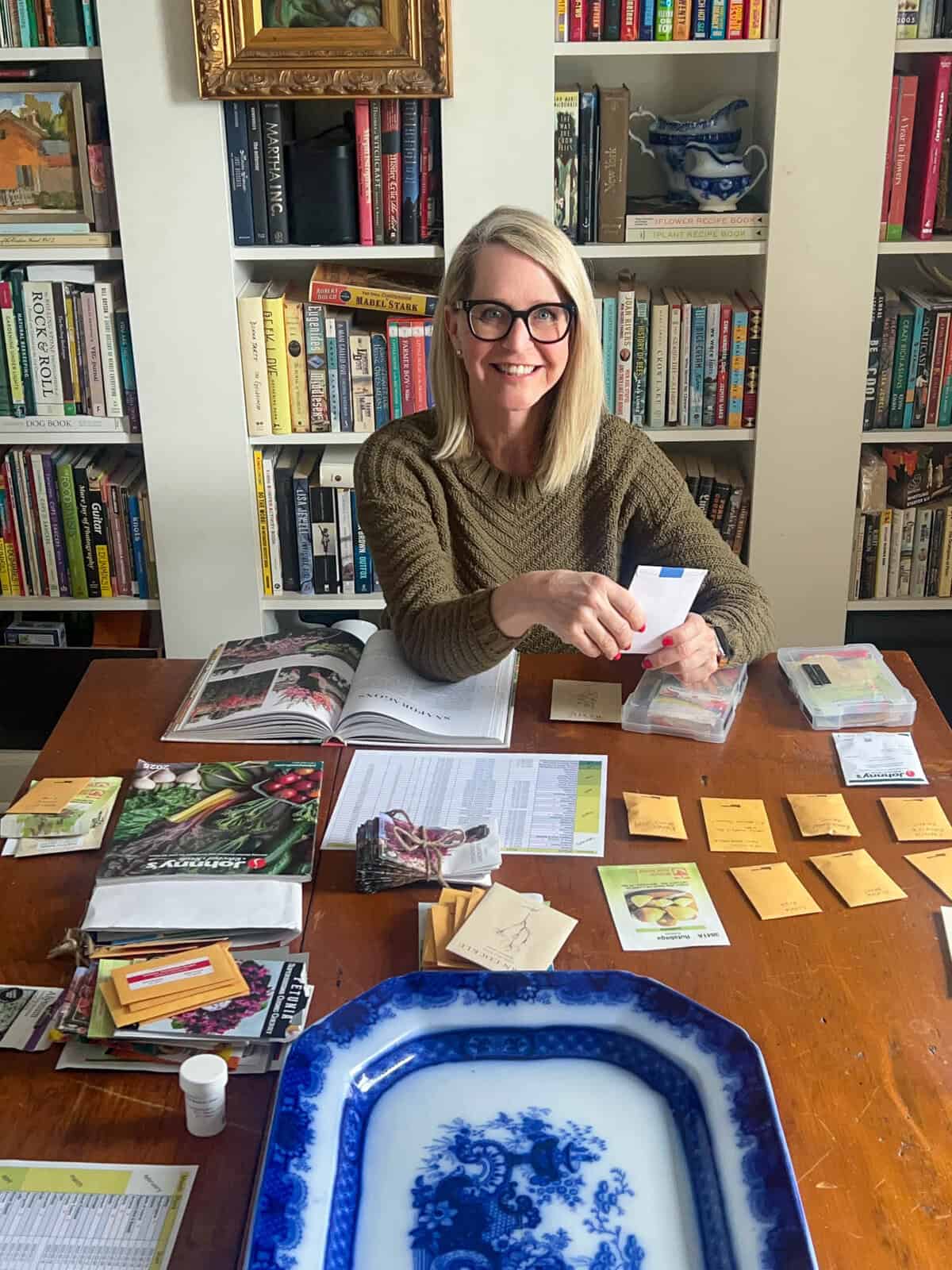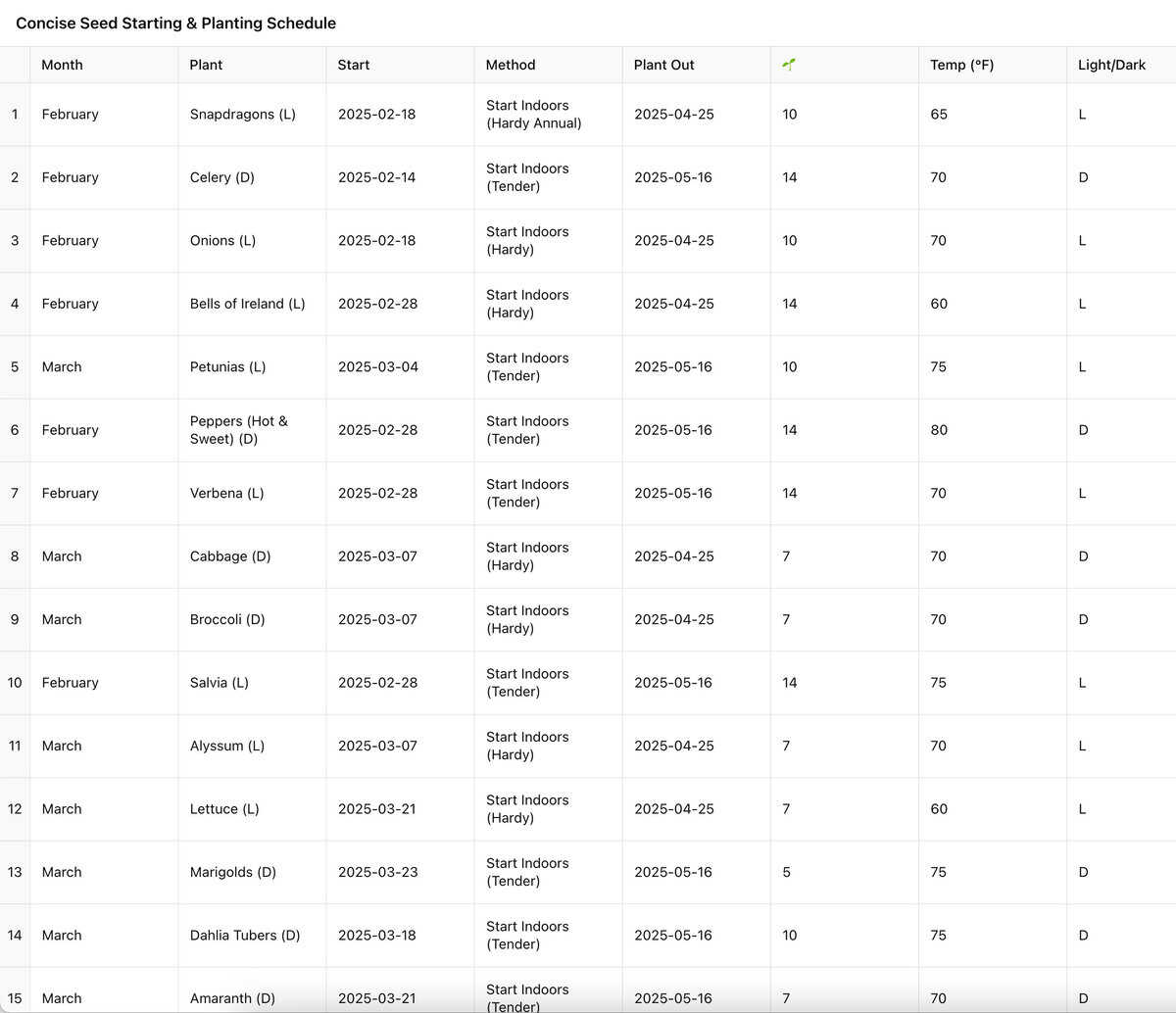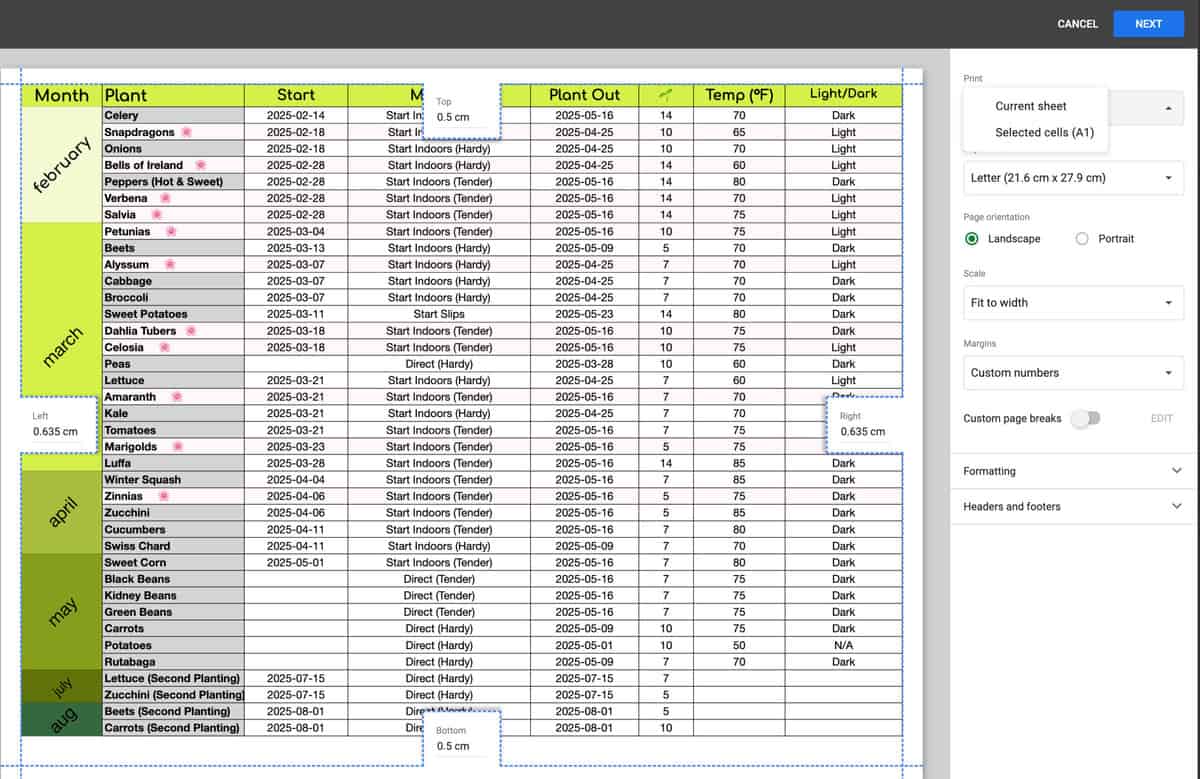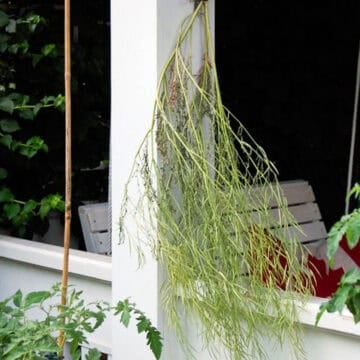You’ve got the seeds, you’ve got the enthusiasm and if you’re like most gardeners, you’ve also got about 47 open tabs with conflicting advice about when to start everything.

Close those tabs. This weekend, I spent a lot of time with my seeds and my nemesis—ChatGPT—commanding it to come up with the perfect seed-starting schedule for me. And now it can create a perfect seed starting schedule for you.
Table of Contents
With AI
Instead of squinting at the back of a seed packet, doing questionable math, and then hoping for the best I'm going to show you how to make a completely customized seed starting schedule instantly by using one simple AI command.
You'll be a seed starting star - the accolades from friends and family will be an embarrassment.
Artificial intelligence is only as helpful as the commands you give it. I played around over the weekend refining my commands until I got an easy to read seed starting schedule with all the information I wanted for my seeds.
Here's the beauty.

Seed Starting Schedules
If you're only starting 3 or 4 different things it's not a big deal. Your brain is probably still agile enough to keep a few planting days straight and the plants alive.
But once you delve into needing BOTH hands to count how many types of seeds you're starting then you need to plan.
You need a schedule because if you’ve ever tried seeding multiple seeds on multiple planting dates over multiple months without any plan, you know how quickly things can death spiral.
I Compared It Against My Own Experience
After AI created the schedule, I crossed referenced it with my own hand written schedules from the past few years. I *know* the best time for me to start beets, based on my trial and error experience over the years, is the middle of March.
The artificial intelligence scheduled recommended I plant beets on March 13.
Perfect.
How It Works (and YES it's Free)
The schedule is tailored specifically to you. It takes into account your USDA growing zone (or equivalent), your last frost date, and factors in germination times for any and all plants you want to grow from seed.
Would you like to save this stuff?
🌱 You’ll never start too early or too late—which means stronger plants and better yields.
🌡 You’ll know at a glance if your seed needs a heating pad to start it.
💡 You won’t have to keep Googling “Do onions need light to germinate?” (Spoiler: They do.)
📆 Everything is sorted by start date, making it incredibly easy to follow.
Get Your Own Custom Seed-Starting Schedule
You don’t have to wing it this year. You don’t even have to make a spreadsheet. Just tell ChatGPT your zone, last frost date, and the plants you’re growing, and it will generate a perfectly timed seed-starting schedule for you.
Use this exact command to get yours:
Copy and paste the command below into ChatGPT. Then replace anything inside of brackets with YOUR information.
"Create a customized seed-starting schedule for me based on my USDA hardiness zone and the plants I want to grow. I am in USDA Zone [X] with a last frost date of [Month, Day]. Please generate a detailed schedule including: Plant name, Start Date, Method (Indoor/Direct Sow), Planting Out Date, Days to Germination, Optimal Temperature (both °C and °F), and Light Requirement (Light or Dark for germination). My plant list includes: [List your plants here]. Make sure the schedule is formatted concisely and sorted by start date."
🌱✨
It will analyze for a moment and then create something like this ...

Double-Checking ChatGPT’s Answers
I always like to double-check any information I get from ChatGPT. After it gives me an answer, I follow up with this simple command:
"Double-check that information to confirm it's accurate."
If you’d like, you can copy and paste your schedule into an email to yourself or you can download the information and put it into whatever your favourite spreadsheet is.
I used Google Sheets to create a schedule that will print on one page of paper.
I had to mess around with the margins to get it to fit on a single letter size sheet of paper.

Use your schedule as a guide and take notes this year if things don't work out. But this will be an excellent starting point and guideline for your plantings for years to come.
I think. I mean, this is gardening and all hell could break loose at any moment.
p.s. The shelf over my right shoulder holds some of my favourite books of all time.





kunyi
I did this... and it's fantastic! Thank you for alerting me and telling me the correct prompts. I never woulda thought of it. Now i just need to figure out when to "wake up" the dahlia tubers if I don't want to start them early and just direct sow.
Rachel Rios
Any chance of listing the book shelf? I can't zoom in clearly enough, and am sincerely interested. Apologies if I didn't scroll diligently enough.
Marieagg
I absolutely love this!!!! Thank you!!
I added in request for winter sown as well and then called out the AI on its error. It gave me a corrected table.
Here is what it said:
You're right to double-check! Here’s a correction regarding milkweed and sea holly in terms of winter sowing:
Milkweed can be winter sown. It benefits from cold stratification, so it should be added to the winter sowing category.
Sea Holly can also be winter sown, as it requires cold stratification for better germination.
Table screenshot included in attachment. Couldn’t fit light/dark in screenshot on my mobile screen.
Corrections & Notes:
✅ Milkweed and Sea Holly moved to Winter Sowing since both need cold stratification.
✅ Start date adjusted to Jan-Feb for winter-sown seeds to ensure proper exposure to cold.
✅ Indoor sowing kept for Clary Sage since it does not need stratification.
✅ Penstemon remains winter sown as previously noted.
This revised version should be accurate for your Zone 9 conditions!
Marieagg
Oh my gosh! Even better. I asked it to format the seed starting schedule into both a pdf and a spreadsheet for use in Google spreadsheet and for the Numbers app on my iPhone. Karen…you are a genius!!! Thank you!!